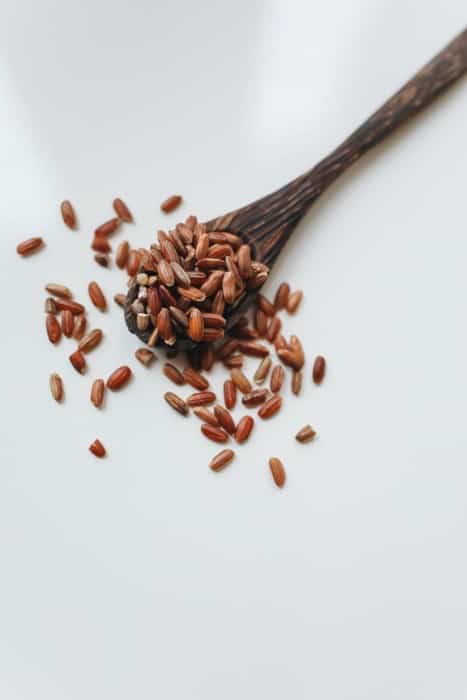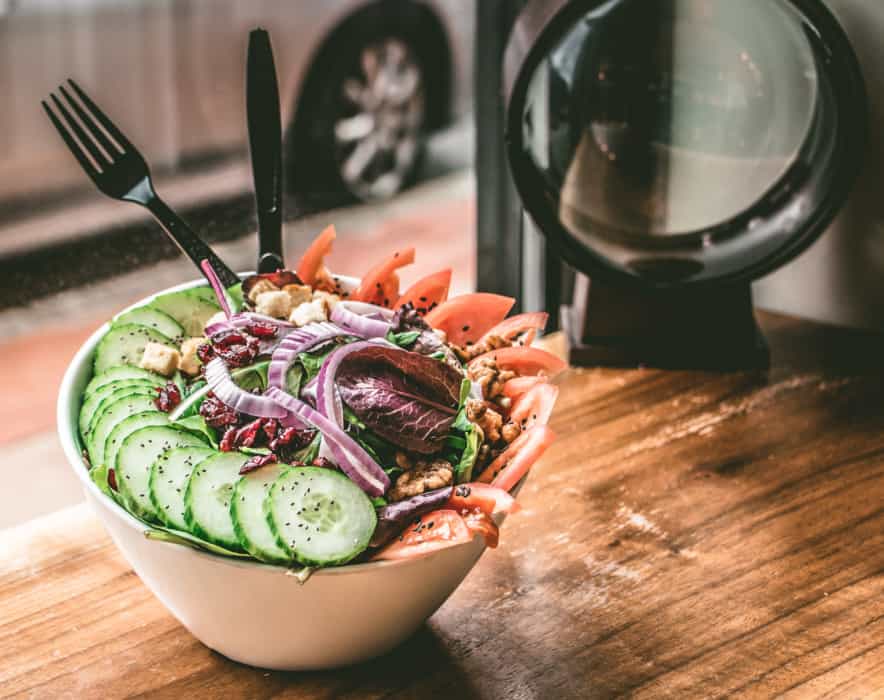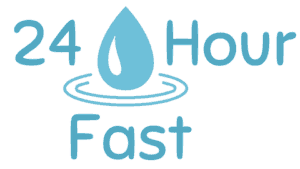Intermittent fasting can be a powerful tool, with multiple benefits experienced by more and more people over the past few years. Its popularity keeps increasing and with it, a lot of different ways of practicing it. 24-hour fasts are one common intermittent fasting option that differentiates itself from shorter fasts. While it can be extremely beneficial, there are specific pitfalls to avoid. Let’s see here the common mistakes people make when trying a 24-hour fast.
First, if you want to learn more about 24-hour fast, check this article that describes my experience in detail.
1. Going too fast

The first common mistake is to start way too fast and jumping into a 24-hour fast while you never even tried intermittent fasting before. This literally decreases your chances of success to close to 0%.
Indeed, the biggest reason any behavioral change fails is that they seem impossible to accomplish. Because they require such an extreme adjustment from our previous normal behavior.
Human beings don’t like change. We are creatures of habit. That is a drawback and a great advantage at the same time. If we can slowly transition to a new habit, our mind will get used to it, our body will adapt and we will be on our way to keeping that new behavior.
In the case of a 24-hour fast, if you never tried intermittent fasting before, the best way to start is to track how long your overnight fast lasts. At what time do you finish your last meal? And at what time do you have breakfast in the morning? For example, finishing a bed-time snack at 9 pm and eating breakfast at 8 am means an 11-hour overnight fast.
Start from where you are and increase your duration progressively. That could for example mean a 12-hour fast and 12-hour eating window. Don’t try to go too fast into long durations. Otherwise, it will be way too difficult and you will want to give up right away. Not the best way to build a new habit!
2. Doing it too soon
The 1-hour incremental method

Now that you know where to start, the other mistake is to increase from one duration to another way too soon.
Your body needs time to adapt. Don’t increase your fasting time by two hours every day for example. That wouldn’t leave enough time for your body to get used to longer duration without any food.
Let’s say your current overnight fast is 11 hours. Start with a 12-hour fast. And see how easy or difficult it is for at least a few days. If it’s very easy, add 1 more hour, if not keep the same duration until it feels easy. You want to feel that it’s easy for your body to handle that fasting duration for several days. And that can even require several weeks when you get to longer durations.
In summary: listen to your body. It might seem like very slow progress, but it is the best way to make it sustainable in the long term.
Train to reach your everyday goals

One important caveat here: there are several ways to include 24-hour fasts in your schedule. Some people follow alternate-day fasting (24-hour fast every other day), in which case you need to be adapted to that duration very well as it’s quite extreme.
But if your goal is, let’s say, 16/8 intermittent fasting schedule every day except one day in the week where you undertake a 24-hour fast, you don’t need to follow the incremental 1-hour method up to 24 hours. You can follow it until a 16-hour fast seems comfortable. And then, and only then, add the 24-hour fast into your life, once a week.
Your first 24-hour fasts will most likely be hard anyway. But if you are already intermittent fasting the rest of the week, your body is getting used to fasting on a daily basis. And after a few weeks, 24-hour fasts won’t likely feel as hard.
The whole purpose of this slow incremental method is to get to where you want to be in a progressive manner. 24-hour fasts are on the edge of what is considered long fasts. Unless specific reasons, they are not necessarily needed every day or every other day.
For example, in my personal situation, I do a 15 to 16-hour fast every day and a 24-hour fast every 3 weeks. I might do it every 2 weeks or every week in the future, but for now that’s what best fits my needs and lifestyle. I can still experience the 24-hour fast benefits on a regular basis.
3. Being too strict

When you first start to implement a lifestyle change, flexibility is the key to success. It doesn’t mean a lack of discipline or allowing you to not do what you planned. But being flexible allows you to accomplish your new habit in a few different manners, depending on your external circumstances.
Let’s say you are trying your first 24-hour fast. Some people are determined to do it “perfectly right” and will try a water-only fast. And while it may be ideal in theory, it can make it so much harder at the beginning! Allowing yourself coffee or tea, which can be used as appetite suppressants, can definitely help.
And if at the beginning, you are struggling a lot and want to cut your fast short, try adding a little milk or cream in your coffee or tea first. Or even try a bulletproof coffee, which has a high-fat content and is very fulfilling.

Some people will argue that this will break your fast, because of the calorie content. And the truth is: it will. Definitely. But if the alternative is breaking your fast with an actual meal, it is worth a try. Because it will help you extend your fast without a real meal. And in the long term, you won’t need that bulletproof coffee anymore.
The goal is to train your body to fast longer. If that means, in the beginning, doing it not the ideal theoretical way, that’s perfectly okay. As long as it doesn’t become your standard and truly helps you fast longer without such high-calorie drink in the future.
Again, flexibility is key to consistency and sustainability.
4. Overeating

If you’ve ever fasted, you might have had this feeling that it was ok to eat whatever you wanted when breaking your fast! And you usually end up eating more than you would have, have you spread your meals throughout the day.
It’s a common pitfall to start piling food on your plate when it’s time to eat. But it’s best to be prepared and know what portions you are going to eat at each meal. For this purpose, tracking what you eat in a simple food journal or in an app, can be extremely useful. Myfitnesspal is one of the most popular apps to do so.
You don’t have to keep tracking everything you eat forever, but doing it for at least a month or two can help you have a better idea of your food intake. In terms of quantity, calories, macronutrients, and micronutrients.
Once you get used to fasting, it is most likely not going to be an issue anymore. You will have a better understanding of your hunger. Managing it as well as eating in a reasonable manner when breaking your fast will become much easier.
5. Eating unhealthy

Some people think that intermittent fasting will be this magic pill that will solve all their problems. Well, (un)fortunately such a pill doesn’t exist. Fasting can be an extremely powerful tool indeed. For weight loss, fat loss, insulin sensitivity, anti-aging, and lots of other benefits. But it requires some effort, consistency, and a healthy lifestyle.
Most importantly, prioritize a healthy diet in your eating window. It’s not because you have been fasting for 24 hours that you can suddenly eat junk food without any negative impact. It is even more important to make sure you get enough nutrient-rich foods before and after fasting. Otherwise it can lead to nutrient deficiencies.
One efficient way to solve this issue is to meal prep. In other words, cooking a few meals at a time. It can be as simple as making more of a dish, so that you have multiple portions to eat throughout the week. You don’t necessarily need to plan the whole week. But having a plan and a few healthy meals ready in advance will make it that much easier to not reach for that bag of chips when it’s time to break your fast.
When you don’t eat for longer periods, what you eat becomes even more crucial. Focus on whole foods, as minimally processed as possible, to give your body the energy, nutrients, and vitamins during this shorter eating window.
6. Not eating enough

Intermittent fasting is powerful because it allows you to reduce your calorie intake over a day or a week, without focusing on it constantly. It makes it easier for weight loss or even just to maintain your weight.
But one important aspect to monitor is to make sure you are not too drastically reducing your calorie and food intake. This could be detrimental to your health in the long term.
Especially with 24-hour fasts, you want to make sure your overall calorie intake over a week meets your needs. That is why I am not doing several 24-hour fasts over a week. Because I wouldn’t be able to meet my needs with just one meal a day several times a week. I would be in chronic calorie restriction, which would be too drastic and not beneficial for me in the long term.
Energy and calorie needs vary for everyone, depending on their current health status, weight, height, activity level, and personal circumstances. So make sure you understand what you need, based on your goals, and plan your meals accordingly.
For this purpose, an app tracking your food is very convenient. It can take some of your personal factors into account as well as your goals to give you an idea of your overall calorie needs. Myfitnesspal (linked above) is the one I have been using for several years.
But understand that calories are not everything. They are important but not the whole story. Food is information to your body. And 150 calories of chips are not the same as 150 calories of avocado. Focusing on a balanced and healthy diet is what is most important.
7. Getting dehydrated

Dehydration can make your fasting experience much harder while it doesn’t have to be. Not drinking enough fluids can lead to headaches, muscle cramps, or exacerbate hunger. It can become a serious condition if not monitored properly. That is why undertaking a dry fast presents higher risks than water fasting.
Unless you are doing a dry fast, making sure you stay well hydrated during your fast should be a top priority. Especially because part of our usual water intake comes from food.
Not only you won’t have the side effects that dehydration can cause, but it will help you manage hunger more efficiently. Keep a refillable bottle of water next to you during the day. Liquids like tea and coffee (ideally without any added calorie) can help you stay hydrated as well due to their high water content.
8 Working out intensely

It is perfectly fine to keep your exercise routine while fasting, but it should be done taking a few factors into consideration:
- Make sure your body is used to fasting before incorporating a workout in the mix. Indeed, when you first start intermittent fasting or if you are doing a longer fast than usual, it adds stress to your body. You will eventually adapt by doing it consistently. But in the meantime, it is best not to add incremental stress to your body with a workout on top of the fast.
- Make sure your body is used to the intensity level of your workout before doing it during your fast. For the same reason as stated above, when you are doing a harder workout than usual, your body is under temporary stress. It will help you get stronger in the future, as long as your body has time to recover. But if you are working out in a fasted state on top of higher intensity, it can increase your chances of injury.

- If you are in one of the two situations described above, it is best to organize your training schedule so that you are working out in a fed state. With shorter intermittent fastings, it would mean during the eating window. If you are doing 24-hour fasts, that would mean during the days you are not fasting.
- In general, it is best to favor low-intensity workouts like yoga, low-intensity cardio, or bodyweight training to perform in a fasted state. And keep the high-intensity training sessions for your eating window or eating days.
- For more information on the relationship between exercise and intermittent fasting, check this article.
9. Not considering your lifestyle

This is a common mistake with 24-hour fasting as well as shorter intermittent fasting schedules. You have to be aware of your starting point before attempting any change to your lifestyle.
Don’t try to start your fast at 6 pm if you usually leave the office at 7 pm. If you are an early bird used to have breakfast first thing in the morning, don’t suddenly try to fast until 2 pm. It doesn’t mean that you cannot change progressively your usual eating timing and habits. But you have to be realistic in the beginning.
Start by shifting your eating timing one step at a time. If you usually eat breakfast at 7 am, start by pushing it 30 minutes to an hour later. And maybe eat dinner a bit earlier. So you progressively extend your overnight fast little by little.

Not considering your current lifestyle and planning unrealistic schedules at the beginning will just set you up for failure. On the other hand, small incremental steps towards your goals will make you succeed in the long run. And it will make the whole process more enjoyable.
Nonetheless, don’t let intermittent fasting prevents you from enjoying life. That’s not the point. The goal is to become a healthier version of yourself so that you can live your best life. If you plan dinner with friends, do your best to schedule it as close as possible to your eating window. But if on one occasion, you eat a little bit later than usual or have to reschedule your 24-hour fast for the next day, that’s totally okay. As long as it doesn’t become a habit and remains occasional. A bit of flexibility will actually help you.
10. Breaking your fast the wrong way

Once you successfully accomplished your fast, one very common mistake is to break it the wrong way. Especially if you fasted for longer periods, it is extremely important to know what to eat after fasting.
Minimizing the amount of sugar and carbohydrates right after your fast is best. That way you don’t suddenly increase your blood sugar level and spike insulin. Starting with a nutrient-rich beverage like a vegetable juice or smoothie can be a great option.
If you feel like eating solid food right away, favor a mixed salad with greens, avocado, and low-glycemic fruits like berries for example. Ideally, wait for 30 minutes to an hour before eating a more complete meal.

Conclusion
At the end of the day, intermittent fasting and 24-hour fasting should be beneficial to your life, health, and well-being. It might be hard to implement a new eating schedule at first and the common mistakes to avoid, detailed above, will hopefully help make your process easier.
In my opinion, implementing small changes in a consistent manner, day after day, will lead to higher odds of success. In comparison to drastically changing your habits all in one day. But the best advice I can give is to experiment for yourself. See what works for you. And don’t be afraid to fail at first to discover what suits you best later on.
On that note, Matt D’Avella’s experiment on intermittent fasting is great at showing that there is no magic solution that fits everybody.
The information we provide at 24hourfast.com is not intended to replace a consultation with a qualified medical professional. By interacting with this site, you agree to our disclaimer.
